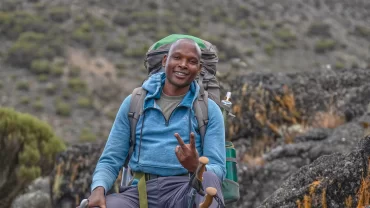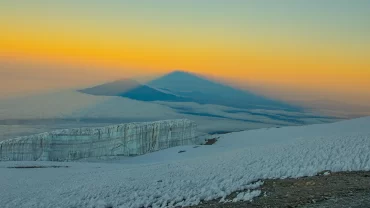Mount Kilimanjaro, located in Tanzania, is the highest free-standing mountain in the world and Africa’s tallest peak, standing at 5,895 meters (19,341 feet) above sea level. It attracts thousands of climbers each year, from experienced trekkers to first-time adventurers, all aiming to reach Uhuru Peak. However, despite being a non-technical climb, the altitude and changing terrain make it a challenging endeavor. To maximize your chances of success and enjoy the journey, preparation is essential. Follow Dismass Kilimanjaro Experience summit tips and what keep our success rates at 98% to ensure a safe and rewarding climb.
1. Train for Endurance and Altitude
One of the most crucial tips for a successful Kilimanjaro climb is physical preparation. Kilimanjaro may not require technical climbing skills, but its altitude and long trekking days demand endurance.
- Engage in cardio workouts such as running, cycling, or swimming.
- Strength training and core exercises improve stability.
- Practice long walking for at least 4 hours, running, swimming and cycling, to build stamina.
- If possible, train at high elevations to simulate altitude exposure.
- Stair climbing is a great way to strengthen your legs for the uphill trek.
- For more details in training sessions please click here
2. Choose the Right Route
Selecting the right route plays a huge role in your success rate. Some Kilimanjaro routes provide better acclimatization than others.
- Machame Route – One of the most popular and scenic routes, taking 6–7 days.
- Lemosho Route – Offers the best acclimatization, fewer crowds, and stunning landscapes (7–9 days).
- Marangu Route – Shorter and easier, but with lower success rates due to rapid ascent (5–6 days).
- Rongai Route – The only route from the north, featuring drier conditions (6–7 days).
- Northern Circuit Route – The longest and most scenic, with the highest summit success rate (8–9 days).
For first-time climbers, longer routes improve acclimatization and summit success rates.
3. Acclimatize Properly to Avoid Altitude Sickness
One of the biggest challenges when attempting to summit Kilimanjaro successfully is altitude sickness. It can affect even the fittest climbers. (Another reason why choosing Dismass Kilimanjaro)
- Follow the “climb high, sleep low” strategy.
- Take an extra acclimatization day highly recommended.
- Stay hydrated and drink 3–4 liters of water daily,(having a good guide will help).
- Maintain a slow, steady pace (known as “pole pole” in Swahili).
- Watch for symptoms like headaches, nausea, and dizziness. (well trained guide needed)
Taking it slow and listening to your body is key to reaching Kilimanjaro’s summit safely, (well planned itinerary will play a key roll)
4. Pack Smart for Varying Conditions
Packing the right gear can make or break your Kilimanjaro experience. Expect changing weather conditions from tropical forests to freezing summit temperatures,
Essential Packing List:
- Layered clothing: Moisture-wicking base layers, insulating mid-layers, and a waterproof shell.
- Quality hiking boots: Broken-in and waterproof to prevent blisters.
- Thermal gloves, hat, and balaclava for summit night.
- Hydrationw system: A CamelBak or water bottles with an insulating cover.
- Trekking poles for stability on steep and rocky sections.
- Headlamp and extra batteries for early morning summit push.
- please see our packing list
A well-packed backpack ensures comfort and warmth, increasing your chances of a successful Kilimanjaro climb.
5. Stay Mentally Strong and Follow Your Guides
The climb is as much a mental challenge as a physical one. Many climbers struggle on summit night due to exhaustion, cold, and altitude effects.
- Break the climb into small goals instead of focusing on the summit.
- Stay positive and embrace the journey. A strong mindset keeps you moving forward.
- Trust your guides—they are experienced in ensuring climbers’ safety and success.
- Celebrate small victories along the way, like reaching different camps.
Conclusion
Summiting Mount Kilimanjaro is a once-in-a-lifetime achievement, but success depends on thorough preparation, strategic planning, and the right support team. By following these tips for a successful Kilimanjaro climb—including proper training, selecting the most suitable route, and maintaining mental resilience—you will significantly enhance your chances of reaching Uhuru Peak. Partnering with an experienced outfitter ensures safety, comfort, and expert guidance, making your Kilimanjaro adventure both rewarding and memorable.
Are you ready to embark on this incredible adventure? Book your Kilimanjaro trek today with expert guides to ensure a safe and successful climb!





Comment (0)